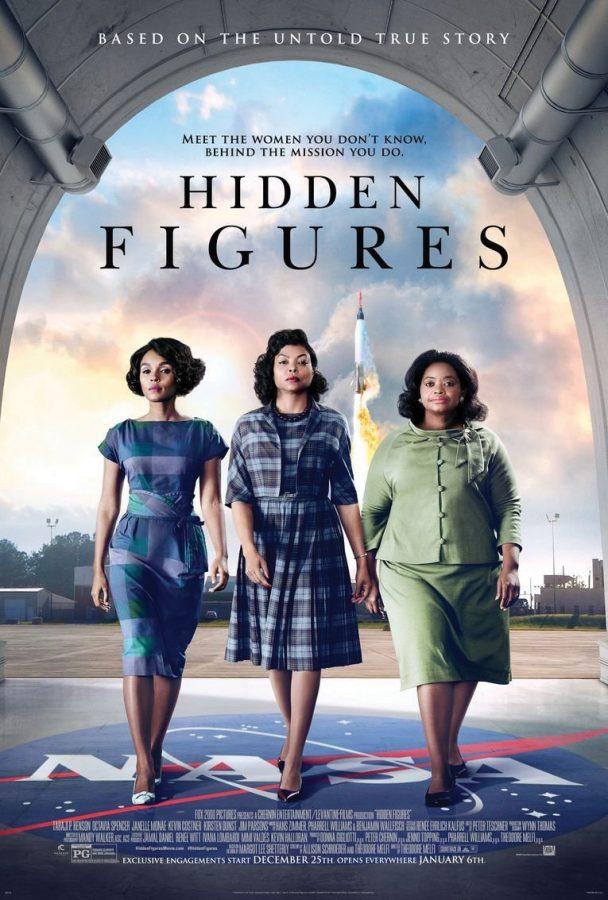New film deemed “inspiration” to viewers
January 13, 2017
I ventured into the local Carmike Cinemas Jan. 5 to watch “Hidden Figures,” a film I saw the trailer for months in advance and heavily anticipated viewing.
The book-based biographical comedy-drama follows the life of Katherine Johnson (née Goble and portrayed by Taraji P. Henson), an African-American woman whose spectacular mathematical skills at NASA were a major part of astronaut John Glenn’s Earth orbit in the 20th century space race. The movie also focuses on Dorothy Vaughan (Octavia Spencer) and Mary Jackson (Janelle Monáe), two African-American women who helped reform the racial norms of NASA in Virginia.
I was hooked from the beginning with a scene from Katherine’s childhood where her instructor told her parents just how intelligent she was as they made plans for her to continue her education. A young Katherine proved her skills to adults more than twice her age with a black board and chalk, which becomes her signature method for calculating.
Within her role as a computer, Katherine has to work with others whose intelligence she surpasses, while also receiving less respect and a passive-aggressive work environment because of her gender and skin color. This culminates in the “bathroom speech,” where she explains that she is a hard worker and should not have to deal with situations presented earlier in the film. The scene is a tear-jerker and will make anyone not already in love with Henson fall for her.
Another aspect of the movie that jars the audience is the harassment the trio receives from a police officer while repairing their vehicle on the way to work. They make jokes about fear of the police to normalize the behavior, which is similar to the way many African-Americans in present day deal with anticipated interactions with police.
Although the movie highlights Katherine’s career, it also shows her life outside of work. She is a widowed mother of three who balances a budding romance with being a breadwinner and having a social life that includes regular worship services on Sunday. Although this adds a human element to Katherine’s mathematical abilities, it slows the film’s pace in places, such as when Katherine puts her daughters to bed in a scene that should have been shorter.
The film spends less time on Vaughan’s and Jackson’s lives, but it helps to give their time away from work the pacing I would have preferred with Katherine’s. Vaughan’s goal is to become a supervisor over the West Area, the part of a segregated NASA dedicated to African-American women mathematicians. Although she does the work of the position, she does not receive the title, respect or pay.
Jackson also wants more: to become the organization’s first female engineer. To do so, she has to take classes at an all-white school, which was not allowed due to Virginia’s segregation laws.
Watching the women in the film is inspiring to moviegoers of all backgrounds, showing that anyone can accomplish a goal, even when told they cannot.
The film also frustrates, in a necessary way, when it makes the audience question why many of us never heard of these women when we studied space in our elementary and high school science courses, giving meaning to the title “Hidden Figures.”
Overall, I give “Hidden Figures” four out of five gold stars. While the movie’s pacing was somewhat slow, the actresses and the historical info the movie provides made up for it.


